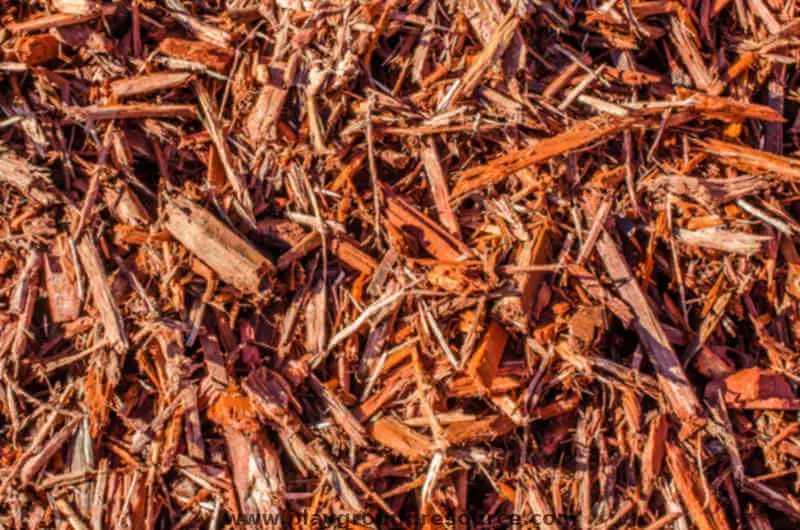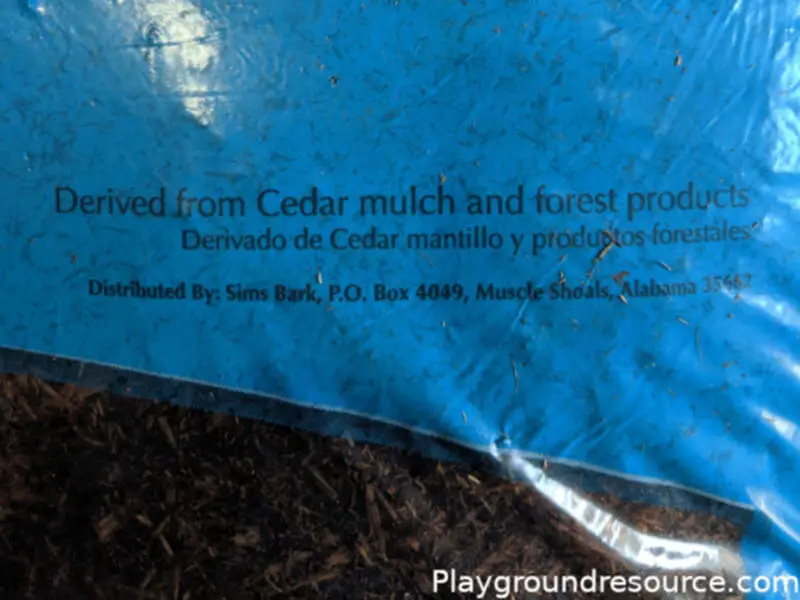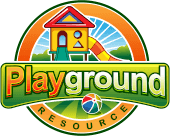
Today we’re going to talk about cedar mulch and using it as a ground cover in your playground area. There are many “types” of cedar trees and some cedar mulches are better than others.
We’ll cover everything in this article and list the pros and cons of cedar mulch as a ground cover for your playground.
Table of Contents
Is Cedar Mulch Good for Playgrounds?
The quick answer is yes, it’s a great ground cover for your playground. Cedar mulch has many benefits including natural oils and resins that repel termites and other pests.
Cedar mulch also decomposes at a much slower rate than most other wood mulches, making it last longer.
But not all cedar mulches are the same. Depending on where you get it, the mulch can have other woods mixed in, or not even be cedar at all. Let’s take a closer look.
Be Careful of What Cedar Mulch You Buy

When you purchase cedar mulch you have to pay close attention to what you are getting.
For example, a quick search at Lowe’s and Home Depot revealed that many cedar mulch products are labeled as “Cedar Mulch Blend“. These “blends” are most commonly a mix of cedar and pine and sometimes other various woods, or even no cedar at all.
These “cedar mulch” products, unless labeled, “100% cedar” and “virgin wood” will most likely be “blends” of re-purposed wood, which is a byproduct of the lumber and paper industries, and if you’re buying cedar mulch you don’t want this.
Buying cedar mulch in bulk from your local landscaping supply company is different, and depending on where you live will determine the type of cedar tree your mulch will be made from.
Buying Cedar Mulch in Bulk
This is going to be your best option. Unless you live in an area that is sparsely populated with cedars or trees in general, you should be able to find this product at your local landscaping supply company.
If cedar mulch is not available in bulk in your area, you can still buy the bags found at your local Lowe’s, Home Depot, or hardware store which usually range from $4 – $6 and will cover a 2-foot x 2-foot area filled 12” deep.
The average price for a cubic yard of cedar mulch is around $40 – $50. A cubic yard will cover a 27-foot x 27-foot area filled 12” deep. That is the recommended depth from the NSC (National Safety Council). Another advantage of buying in bulk aside from cost is that the cedar wood is local, fresh, and the quality is usually much better.
Now let’s take a look at the different types of cedar trees in North America and see which ones mulch is usually made from.
Different Types of Cedar Trees
In North America we have several different species of cedar trees. Cedar trees are lumped into two categories
- “True” Cedar (non-native)
- “False Cedar (native)
True Cedars
Not native to North America, these cedar trees are originally from the other side of the world in the Mediterranean and Himalayan regions. The most common types of “True” cedars you’ll see in North America are usually “ornamental” and planted to beautify one’s yard. The most common types are
- Cedar of Lebanon
- Deodar Cedar
- Atlas Cedar
False Cedars
Still considered a cedar tree, we have many different species growing here in North America, your cedar mulch will most likely come from the Western Red and/or Eastern Red cedar tees
- Northern White
- Alaska Cedar
- Eastern Red Cedar (sometimes known as “aromatic cedar”)
- Western Red Cedar (Most popular for outdoor fencing, decking and other outdoor structures)
You may find it difficult to determine what kind of cedar tree your mulch is coming from unless you are buying in bulk from a landscape supply company. If the mulch has an especially deep red hue and is very aromatic, it’s likely from the Eastern Red Cedar tree. Which is my personal favorite.
When buying in bags from your local hardware store it is most likely either Western Red or Eastern Red, or a mix of the two.
Keep in mind that it doesn’t really matter what kind of cedar tree your mulch is coming from, as long as the mulch is “100% cedar” and “Virgin wood” you’ll be fine. They all basically have the same qualities when it comes to mulch and covering your playground area.
Is all Cedar Mulch Safe for Your Playground?
As long as the mulch is made from 100% virgin wood, then yes, absolutely. One very minor concern (which affects a small number of people) is that some can be “sensitive” to the smell of cedar, and it can be overpowering for them.
Remember this is very rare, and if your little one has never come in contact with “fresh” cedar wood, just have them give it a sniff to see how they react. Most likely they will really enjoy the aromatic, unique smell of cedar wood.
Pros and Cons of Cedar Mulch
Pros of Cedar Mulch
- Looks great. Beautiful deep red hues, that looks absolutely amazing in any yard and play area.
- Natural insect repellent. The natural oils and resins in cedar wood make it unattractive to termites and other pests. If you have a termite problem in your area, then cedar wood is a great option.
- Longevity. The same natural oils and resins that give protection from insects also preserve the wood making it very resistant to decay. Cedar wood is the go-to material for fencing, decks, and other outdoor structures because it lasts for so long. This advantage really comes through for you when you use this wood as a mulch. You won’t have to replace it nearly as often as other wood mulches. Cedar mulch lasts on average 7 – 10+ years, making it worth the extra money
- Smells great. The unique, wonderful smell has made cedar wood a favorite for many purposes over the centuries, such as using it as a building material for clothes closets and chest-of-drawers. Many people also place cedar chips around their house for the wonderful smell
Cons of Cedar Mulch
- Pricey. Honestly, unless you live in an area that’s sparsely populated with trees and cedar is very rare, this shouldn’t be a problem. The average price for 1 cubic yard is $40 – $50, and remember that this mulch will last much longer than most other wood mulches, so it can be worth the extra cost
- Smell. As I mentioned earlier, the smell can be overpowering for some, but this is easy to test. Just bring your little one along to the store and have them give it a sniff to see what they think.
Final Thoughts and Take-a-Ways
As you can see above, there are not many “cons” when it comes to using cedar mulch as a playground ground cover.
There are so many advantages, the beauty and longevity of this wood alone makes it worth the price.
If you can’t get cedar mulch in your area, or you’re thinking of other options please read some of my other articles on playground ground cover materials here. I’m sure I can help you make the best decision because here at Playground Resource, we give solid, factual, unbiased information.
Whatever materials you decide to go with, remember to have fun and enjoy!
Related Questions
Is cedar mulch bad for dogs?
No, cedar mulch is not toxic or harmful to dogs. Actually a compound in cedar wood’s natural resin called Plicatic Acid had been shown to have “flea repellent” benefits.
Is cedar mulch toxic to cats?
No, not at all. It has been shown that cats may dislike the smell of cedar, and stay away from it, but cedar wood “fumes” are not toxic to cats.
What are some other popular wood mulches for playgrounds?
The most common wood mulches used for playground ground cover are
- Shredded Mulch (usually pine)
- Wood Chips
- Bark Mulch
- EWF aka Playground Chips (engineered wood fiber)
For more information on wood mulch to use in your playground area, please read my article titled “Wood Mulch for Playgrounds – Your Ultimate Guide“

